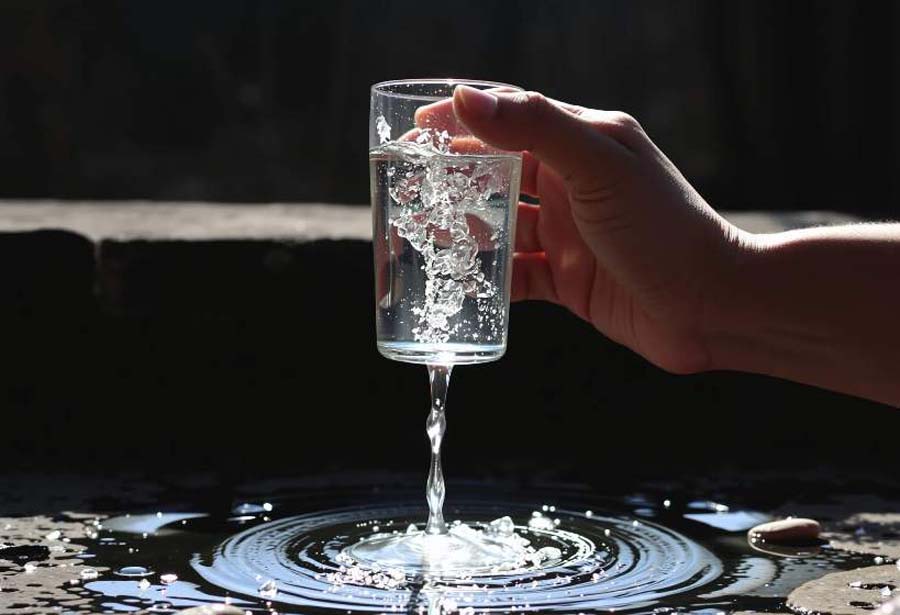Thu 17 July 2025:
A groundbreaking study reveals the presence of antiretroviral drugs and other pharmaceuticals in the nation’s water, prompting calls for urgent legislative and infrastructural upgrades.
A recent study by North-West University (NWU) has uncovered significant concentrations of antiretroviral (ARV) drugs in South Africa’s water sources, particularly downstream from wastewater treatment plants. The research, described as the most extensive of its kind in the region, identified drugs like lopinavir and efavirenz at levels far exceeding global norms, raising serious questions about public health and environmental safety.
This discovery highlights a broader issue of what experts call “contaminants of emerging concern” — substances not currently regulated by national water quality standards.
The presence of these pharmaceuticals is linked to South Africa’s extensive HIV treatment programme. Water scientist Ayesha Laher explains the pathway: “Any medication that human beings take, there is a possibility that some of it is discharged into your urine and then it finds its way into the wastewater treatment works.”
She notes that this isn’t limited to ARVs. “We’re talking about personal care products, we’re talking about microplastics, we’re talking about all the analgesics like your pain medication,” which are also being secreted into the water system.
The core of the problem lies in the country’s ageing and failing infrastructure. Conventional wastewater treatment facilities, which rely on biological processes, were not designed to remove complex pharmaceutical compounds. “Most conventional wastewater treatment works throughout the world are not able to remove these pharmaceuticals from the wastewater,” Laher states.
This issue is compounded in South Africa where, according to the 2022 and 2023 Green Drop reports, a significant majority of these plants are dysfunctional. “More than 80 percent of our wastewater treatment works in South Africa are not functioning,” Laher confirms, meaning they fail to adequately treat sewage before it is discharged back into the environment.
__________________________________________________________________________

https://whatsapp.com/channel/0029VaAtNxX8fewmiFmN7N22
__________________________________________________________________________
A Hidden Risk to Health and Ecosystems
The NWU study, submitted to the Water Research Commission, warns that the presence of ARVs in water constitutes a “hidden or latent risk” to both ecosystems and human health. Researchers observed altered embryonic development in freshwater snails exposed to the drugs and adverse effects on bacteriophages — viruses essential for controlling bacteria in wastewater. Such disruptions could lead to bacterial blooms and a general decline in water quality.
While the direct long-term health implications for humans ingesting low doses of these pharmaceuticals are still being studied, the report flags it as a significant concern. “Humans are also exposed to these compounds via drinking water, and at concentrations exceeding calculated hazard quotients,” the study reads.
Laher clarifies that the immediate danger is not yet fully understood. “We do not know what the effect, the long-term effect is of these ARVs or the pharmaceuticals and how they bioaccumulate either in our body or they’re used up or they pass.”
The central challenge is that these “contaminants of emerging concern” are not included in South Africa’s primary water quality standard, SANS 241. “All of these contaminants of emerging concerns, we don’t have them already in our national standards,” Laher explains. “And in most countries, in developing countries, they don’t have these contaminants as part of their water quality limits.”
This legislative gap means there are no official maximum allowable limits for these substances in drinking water. Experts are now calling for a two-pronged solution. Firstly, to upgrade the nation’s wastewater treatment infrastructure to include advanced processes capable of removing these compounds.
“We need to upgrade our wastewater treatment works to put in membranes and to use advanced oxidation processes such as ozone to break down these pharmaceuticals,” Laher urges.
Secondly, there is a pressing need to update the legislation to include these newly identified pollutants. “We need to get our legislation updated to include all these contaminants and we take guidance from the World Health Organisation that sets these limits and tells us what to do,” Laher concludes.
This would allow for better-informed decisions about water safety and the true long-term effects on the population. For citizens concerned about their tap water, Laher suggests point-of-use filters, such as reverse osmosis or activated carbon systems, as a potential interim measure.
__________________________________________________________________________
FOLLOW INDEPENDENT PRESS:
WhatsApp CHANNEL
https://whatsapp.com/channel/0029VaAtNxX8fewmiFmN7N22
![]()
TWITTER (CLICK HERE)
https://twitter.com/IpIndependent
FACEBOOK (CLICK HERE)
https://web.facebook.com/ipindependent
YOUTUBE (CLICK HERE)
https://www.youtube.com/@ipindependent
Think your friends would be interested? Share this story!






